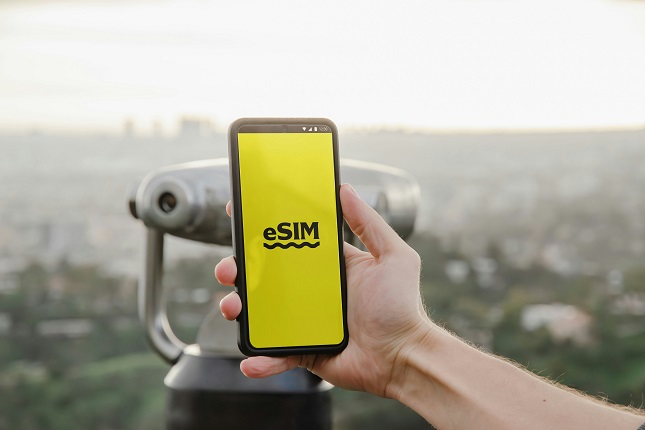The way we connect to mobile networks is changing rapidly, and Canada is no exception. With the rise of embedded SIM technology, or eSIM, more Canadians are questioning whether it’s time to move beyond traditional plastic SIM cards. Unlike physical SIMs, which have been the standard for decades, eSIMs offer unmatched flexibility, enhanced security, and environmental advantages that suit today’s digital-first lifestyle.
In this blog, we will understand the major difference between eSIM and physical SIM cards and why eSIM is a better choice for many users.
Understanding eSIM and Physical SIM?
The primary difference lies in how they exist within a device. A physical SIM is a removable card that must be inserted into your phone, tablet, or hotspot. An eSIM, on the other hand, is a tiny chip embedded directly into the device’s motherboard and cannot be physically removed.
Here’s a quick overview:
eSIM
- Integrated within the device
- Eliminates the need for swapping SIM cards
- Can be remotely activated or reprogrammed
- Supports multiple mobile profiles on a single device
- Saves space inside devices, enabling slimmer designs
Physical SIM
- Requires manual insertion and removal
- Only stores one profile at a time
- Needs to be physically replaced if lost or damaged
- Works in nearly every mobile phone worldwide
- Easy to swap between devices, but less flexible overall
This fundamental difference leads to several advantages for eSIM users, especially in markets like eSIM Canada, where mobile connectivity is rapidly modernizing.
eSIM vs. Physical SIM: A Detailed Comparison
1) Activation Process
- eSIM: Setting up is almost instant. Users can scan a QR code, download an app, or rely on remote provisioning from their carrier. This is particularly convenient for travelers or frequent switchers since there’s no waiting for mail delivery or visiting a store.
- Physical SIM: A new card must be physically purchased, delivered, or picked up. Once in hand, it needs to be inserted into the device, making the process slower and less flexible.
2) Device Compatibility
- eSIM: Supported primarily on newer smartphones, tablets, and wearables. While adoption is growing, not every device is eSIM-ready yet. In Canada, most flagship iPhones, Google Pixels, and Samsung Galaxy models already support it.
- Physical SIM: Universally accepted across virtually all phones, including basic models and older devices. This makes physical SIMs still relevant for those not using modern devices.
3) Ease of Use
- eSIM: Offers unmatched convenience. Switching carriers or numbers can be done digitally, often in minutes. Users can store multiple profiles (personal, work, or travel), making it easy to toggle between plans without carrying extra cards.
- Physical SIM: Requires physically removing and inserting a card. Managing multiple numbers often means juggling multiple SIMs, which can be inconvenient.
4) Battery Efficiency
- eSIM: Slightly more efficient because it eliminates the need for a SIM card reader inside the device. While the savings are minor, they do contribute to better battery optimization in modern phones.
- Physical SIM: Relies on a card reader, which consumes a small amount of extra power. The difference is minimal but still notable in efficiency-focused designs.
5) Security
- eSIM: Much harder to steal or misuse since it cannot be removed from the device. If a phone is lost or stolen, carriers can remotely deactivate or wipe the eSIM profile, reducing risks of fraud and unauthorized use.
- Physical SIM: Easier to exploit through theft or SIM-swapping attacks. Fraudsters can misuse a stolen SIM card to access sensitive information or commit identity-related crimes.
6) Network Speed
- eSIM: Delivers the same network speed as physical SIMs because performance depends on the carrier’s infrastructure, not the SIM type. However, eSIM may allow faster updates and seamless switching between carriers, which improves user experience.
- Physical SIM: Network speed is identical, though switching providers requires a longer process since a new card must be obtained and installed.
7) Environmental Impact
- eSIM: Considered more sustainable since it removes the need for plastic SIM cards, packaging, and shipping. Reducing manufacturing waste and logistics lowers the overall carbon footprint.
- Physical SIM: Adds to global plastic waste. Each card requires production, packaging, and transport, making it less eco-friendly compared to digital alternatives.
Why eSIM is Better Than a Physical SIM?
Switching to an eSIM offers several advantages over traditional physical SIM cards, especially for users who value convenience, security, and flexibility. Unlike physical SIMs, eSIMs are embedded within your device, eliminating the need to carry or swap cards. This modern approach not only simplifies connectivity but also opens up features that physical SIMs cannot offer.
Here are the key reasons why eSIM Canada is often the better choice:
- Convenient Activation: Set up your plan instantly by scanning a QR code or using a carrier app, no store visits or waiting for delivery.
- Multiple Profiles: Store personal, work, or travel numbers on a single device and switch between them seamlessly.
- Enhanced Security: Embedded in the device, eSIMs are harder to steal or misuse. Lost devices can have eSIMs remotely deactivated.
- Eco-Friendly: Reduces plastic waste and lowers the carbon footprint associated with producing and shipping physical SIM cards.
- Future-Ready Technology: Increasing carrier support and 5G adoption make eSIMs ideal for Canadians looking for long-term connectivity solutions.
eSIM combines convenience, flexibility, and sustainability, which represents a smarter, more modern approach to mobile connectivity for both residents and travelers.
Conclusion
The comparison between eSIM and physical SIM cards makes it clear: while traditional SIMs still have their place, eSIM technology is paving the way for the future of connectivity. With easier activation, improved security, and environmental benefits, eSIM is becoming a smarter option for both residents and visitors in Canada.
These SIMs provide the flexibility and convenience that physical SIMs cannot match. Embracing eSIM technology not only improves your connectivity experience but also aligns with a more sustainable and future-ready approach to telecommunications. For Canadians looking to stay ahead in digital connectivity, eSIM Canada represents a smart, modern, and practical solution.







































